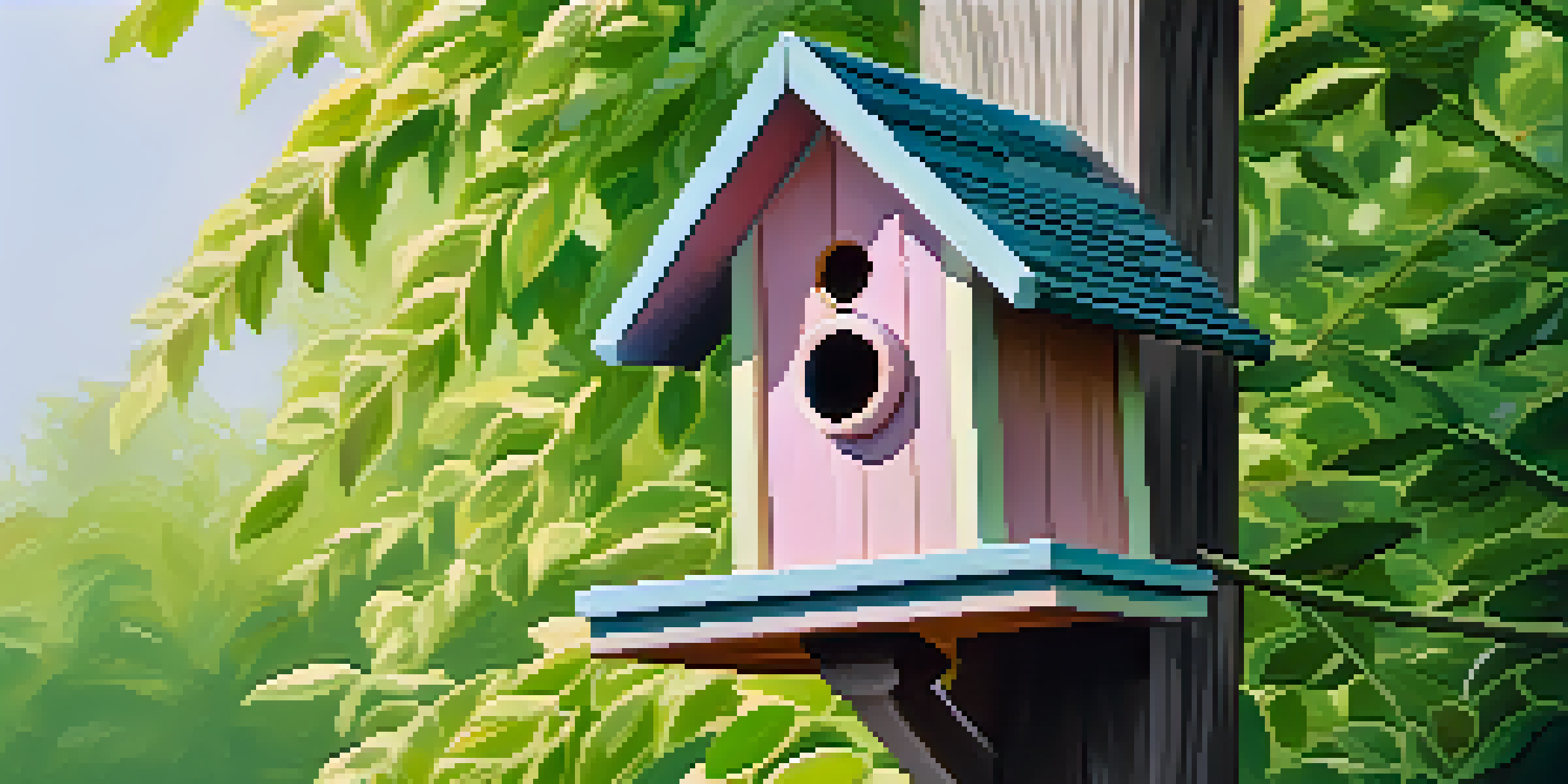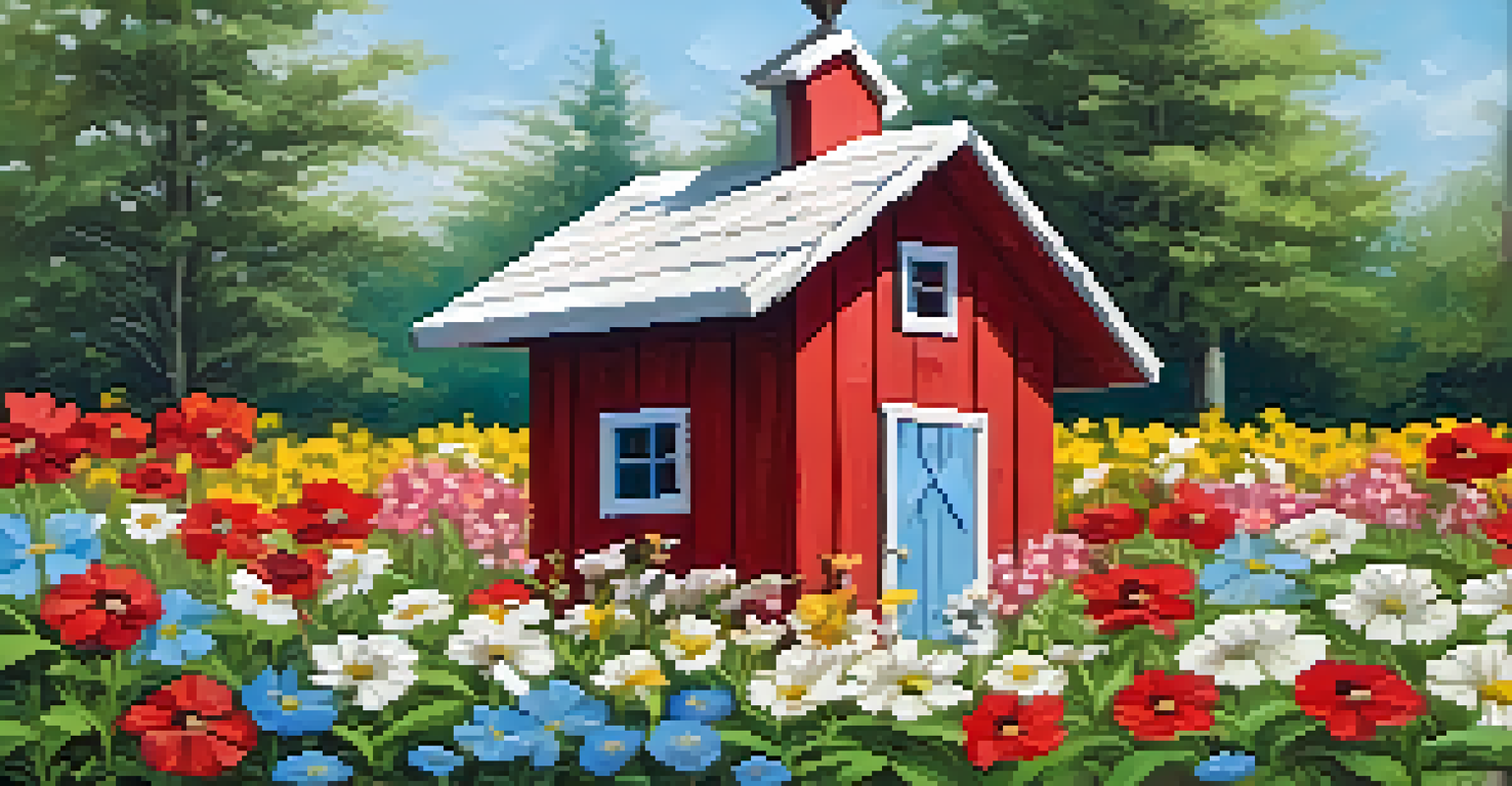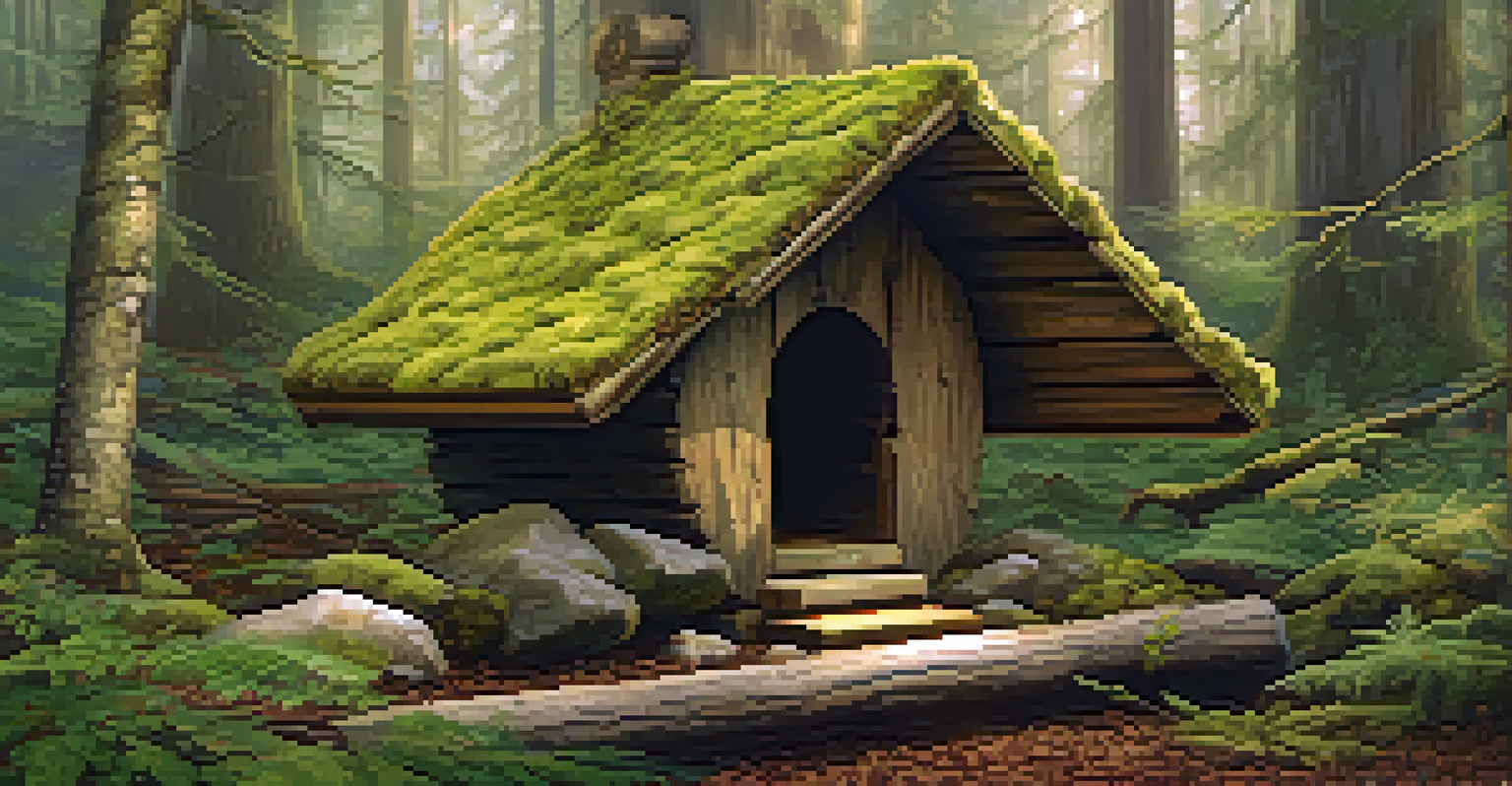Birdhouse Plans: Simple Designs for Beginners and Experts

Understanding the Basics of Birdhouse Design
Before diving into building your birdhouse, it's essential to grasp the basic elements of birdhouse design. A birdhouse typically consists of a front, back, two sides, a bottom, and a roof. Each part plays a vital role in providing shelter while ensuring the safety and comfort of the birds that will call it home.
Birdhouses are a wonderful way to connect with nature and provide a home for our feathered friends.
Consider the size and entrance hole dimensions, as these can vary based on the bird species you're hoping to attract. For instance, a bluebird requires a larger entrance than a chickadee. Knowing your target birds will guide your design choices effectively.
Lastly, materials matter too! Common choices include untreated wood, which is safe for birds, but avoid pressure-treated lumber as it can be harmful. With these basics in mind, you're ready to explore some exciting designs!
Simple Birdhouse Designs for Beginners
If you're new to birdhouse building, starting with a simple design is a great idea. A classic box-style birdhouse is both easy to construct and effective for attracting various birds. All you need are some basic tools, like a saw, drill, and screws, along with a few pieces of wood.

For example, a straightforward design could be a cube measuring about 6x6x8 inches, with a 1.5-inch entrance hole. This size works well for many small birds, making it a perfect starter project. Plus, the assembly process is quick, allowing you to enjoy the fruits of your labor in no time!
Birdhouse Basics for Beginners
Understanding the essential elements of birdhouse design, including size and materials, is crucial for creating a safe and inviting home for birds.
As you gain confidence, you can experiment with different shapes and features. Consider adding a sloped roof for better water runoff or ventilation holes to keep the interior comfortable. The possibilities are endless!
Creative Birdhouse Ideas for Intermediate Builders
Once you've mastered the basics, it’s time to get creative! Intermediate builders can try their hand at themed birdhouses, like a cottage-style design adorned with shingles or a rustic barn-shaped house. Not only do these designs look charming, but they also provide functional homes for feathered friends.
To watch birds is like listening to a song of nature; it brings joy to the heart.
Incorporating unique features such as perches or decorative embellishments can enhance both aesthetics and usability. A perch, for instance, allows birds to rest before entering, making your birdhouse even more inviting. Just ensure that any additions don’t compromise the safety of the birds.
Additionally, painting your birdhouse with non-toxic paint can add a splash of color while also protecting the wood from the elements. Each touch you add not only reflects your style but also makes the birdhouse a delightful addition to your garden!
Advanced Birdhouse Designs for Experienced Builders
For those with more experience, advanced birdhouse designs can be both challenging and rewarding. Consider building a multi-chamber birdhouse, which is perfect for species that prefer to nest in colonies, like purple martins. This type of design requires careful planning to ensure each chamber is adequately sized and ventilated.
You might also explore incorporating natural materials, like logs or branches, to create a more rustic look. This not only enhances the visual appeal but can also mimic natural nesting sites, making it more attractive to birds. Just remember to ensure that these materials are free from chemicals or pests.
Creative Ideas for Birdhouses
Intermediate builders can enhance their birdhouses with unique themes and features, such as perches and non-toxic paint, to attract various bird species.
Lastly, don't shy away from integrating technology! Features like small cameras can allow you to observe the nesting process without disturbing the birds. This blend of craftsmanship and innovation can elevate your birdhouse project to new heights.
Choosing the Right Location for Your Birdhouse
Once your birdhouse is built, the next step is all about location. Birds are particular about where they nest, so placing your birdhouse correctly can make all the difference. Ideally, you should mount it at least five feet off the ground, away from areas prone to predators.
Consider the direction of the entrance hole; facing it away from prevailing winds and direct sunlight can create a more inviting environment. A spot near trees or shrubs can provide shelter and food sources for visiting birds, making your birdhouse even more appealing.
Finally, keep in mind that different bird species have different habitat preferences. Researching what birds are common in your area can help you make an informed decision about the best placement for your birdhouse.
Maintaining Your Birdhouse for Longevity
To ensure your birdhouse remains a safe haven for birds, regular maintenance is essential. After nesting season, it's a good idea to clean out the house to remove old nesting materials and any debris. This not only prevents the spread of diseases but also makes it ready for the next occupants.
Inspecting for damage is also crucial. Look for signs of wear, like cracks or loose screws, and repair them promptly. Maintaining the structural integrity of your birdhouse will ensure it lasts for many seasons to come.
Maintaining Birdhouses for Longevity
Regular maintenance, including cleaning and repairs, is essential to ensure your birdhouse remains a safe haven for birds season after season.
Lastly, consider treating the exterior with a non-toxic sealant to protect it from the elements. This can prolong its lifespan while keeping it safe for birds, allowing you to enjoy your colorful visitors for years ahead.
Engaging with Your Local Birding Community
Building birdhouses can be a fantastic way to connect with your local birding community. Many communities have clubs or online forums where enthusiasts share tips, designs, and experiences. Joining these groups can provide you with valuable insights and inspiration for your next project.
Participating in birdwatching events or workshops can also deepen your understanding of local bird species and their needs. This knowledge can guide your future designs, ensuring that your birdhouses remain attractive and functional.

Lastly, sharing your creations can inspire others to get involved! Whether through social media or community events, showcasing your birdhouses can spread awareness about the importance of providing safe habitats for our feathered friends.